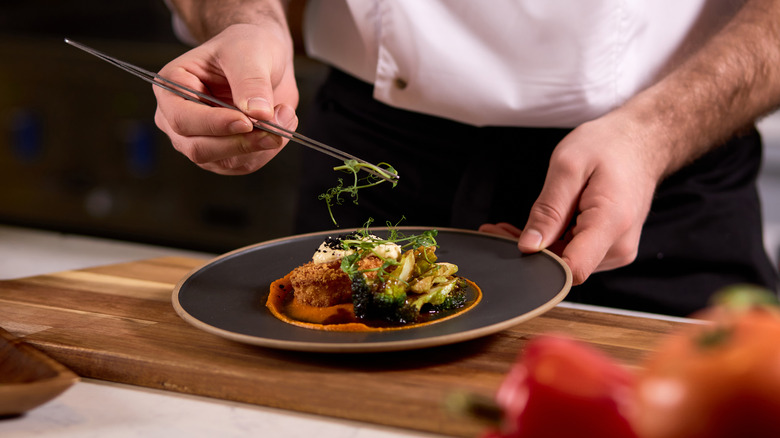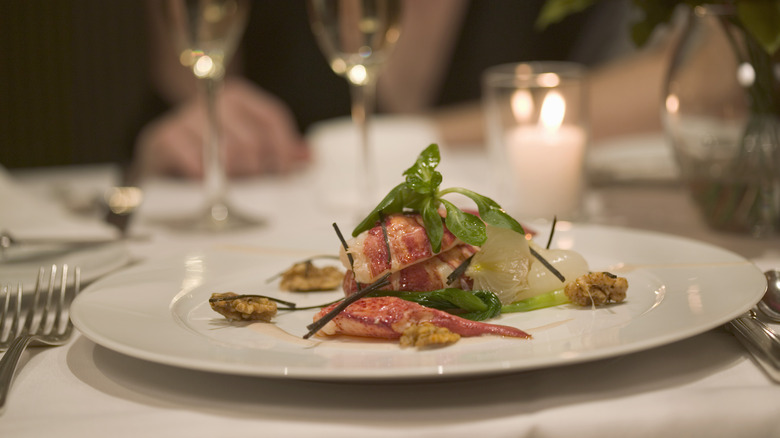What Does It Mean To Order Food A La Carte?
"À la carte" is one of those French dining terms that has managed to retain quite the hold on the English-speaking restaurant world. In high-end restaurants, you may have seen a separate "à la carte" menu or had your server ask if you'd like to order a particular dish à la carte. But what exactly does it mean?
Ordering a dish à la carte simply means that you are ordering it on its own and not as part of a set menu. Many restaurants offer prix fixe menus in which several courses can be purchased for a flat rate, but they generally have a separate, more extensive menu of dishes that can be ordered individually. Dishes that appear on the prix fixe menu are often also on the à la carte menu, but it is generally more affordable to order them as part of the prix fixe than to individually order the same items à la carte.
Origins of à la carte
The term à la carte translates to "off the menu" in French (as in, off the "card" on which the menu is printed) and has been used in restaurant contexts since the 19th century. If you're just learning French, this might get confusing, as "le menu" is also used in French. But the "menu" refers to a prix fixe (literally, "fixed price") meal, or a "menu dégustation," or tasting menu , which might also traditionally be called a table d'hôte. So if you're not ordering the "menu," you're ordering off the "carte." (The definition of à la carte has expanded over the years to include things like spa services, but it is still primarily used in dining and hospitality.)
À la carte can also be used to refer to ordering a dish that does not come with any sides. Larger chain restaurants will often sell "platters" in which a main dish comes with sides for an extra price, but you can also order your main à la carte. Many steakhouses will also sell their steaks à la carte, and you will need to order your mashed potatoes, creamed spinach, or other accompaniments at an additional price to your filet mignon. You will also see à la carte menus frequently at sushi restaurants, with individual sushi pieces priced out separately from tasting platters.
The benefits of ordering à la carte
Ordering à la carte has some benefits, namely that you can order according to how much you wish to eat, and that you can order items that aren't on the prix fixe menu. It also might be cheaper overall to order just one item if that is all you're hungry for. But in general, if you were to order all the items you want on a menu à la carte, it would come out to be more expensive than ordering them as a fixed meal.
In recent years, many restaurants have turned away from à la carte dining, as set menus pose a greater benefit to restaurant industry workers. Restaurants can wean down their menus to make inventory more efficient, and they have a better idea of how many guests they can serve over the course of the evening, as well as how much money they will make. But while this might be the trend for now, à la carte dining certainly isn't going anywhere.



